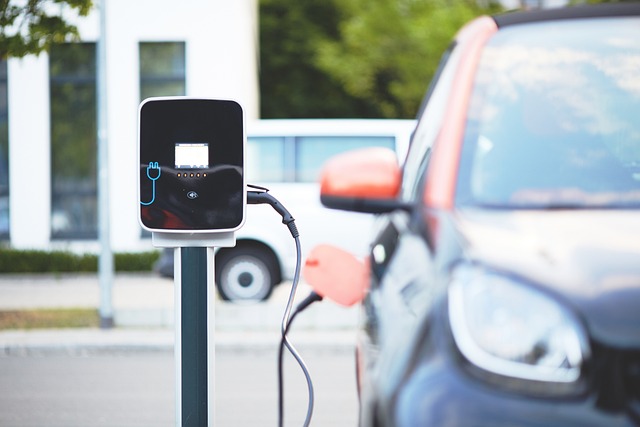How Electric Vehicles Are Shaping Transportation
The transportation landscape is undergoing a profound transformation, driven largely by the rise of electric vehicles (EVs). As concerns about climate change, air pollution, and energy security become increasingly urgent, EVs offer a promising alternative to traditional internal combustion engine (ICE) vehicles. By 2025, the adoption of electric vehicles has accelerated significantly, reshaping not only the automotive industry but also urban planning, energy infrastructure, and consumer behavior. This article explores how electric vehicles are shaping transportation, focusing on technological advancements, environmental impacts, and the evolving mobility ecosystem.

The Technological Revolution Behind Electric Vehicles
Electric vehicles represent a major technological leap forward from conventional vehicles. At the heart of this revolution are advances in battery technology, electric drivetrains, and software integration that have made EVs more practical, affordable, and appealing to consumers.
Battery Innovations
One of the biggest challenges for electric vehicles has historically been limited driving range and long charging times. However, by 2025, innovations in lithium-ion batteries and emerging solid-state battery technology have significantly improved energy density and charging speeds. Modern EVs can travel upwards of 400 miles on a single charge, rivaling the range of many gasoline-powered cars, and fast-charging stations can replenish 80% of a battery’s capacity in under 30 minutes.
These improvements have alleviated “range anxiety” — the fear of running out of charge without a convenient way to recharge — making EVs viable for a broader spectrum of drivers, including those in rural areas and long-distance travelers. Battery costs have also declined dramatically, dropping the overall price of EVs and enabling automakers to offer competitive models across different segments, from compact cars to SUVs and trucks.
Electric Drivetrains and Software Integration
Electric drivetrains are simpler and more efficient than internal combustion engines, providing instant torque and smoother acceleration. This has resulted in EVs delivering performance that often matches or exceeds that of gasoline vehicles, including better handling and quieter operation.
Additionally, EVs are increasingly equipped with sophisticated software platforms that enable over-the-air updates, predictive maintenance, and integration with smart grid technologies. These features not only improve vehicle performance and reliability but also allow manufacturers to continually enhance the driving experience without requiring physical service visits.
Environmental and Economic Impact
The rise of electric vehicles is having a profound impact on both the environment and the economy, redefining the sustainability and cost-effectiveness of personal and commercial transportation.
Reducing Carbon Emissions and Air Pollution
One of the primary motivations behind the shift to EVs is their potential to drastically reduce greenhouse gas emissions. Unlike internal combustion engines, electric vehicles produce zero tailpipe emissions, which means they do not emit carbon dioxide (CO2), nitrogen oxides (NOx), or particulate matter while operating.
By 2025, many regions have seen significant improvements in air quality, particularly in urban centers where transportation is a major source of pollution. When powered by renewable energy sources such as wind, solar, or hydroelectric power, EVs can operate with a near-zero carbon footprint, further amplifying their environmental benefits.
However, the environmental footprint of EVs also depends on the sourcing and recycling of battery materials such as lithium, cobalt, and nickel. Industry players and governments are increasingly focusing on sustainable mining practices and battery recycling programs to minimize ecological harm and ensure the long-term sustainability of EV technology.
Economic Opportunities and Challenges
The growth of the electric vehicle market has stimulated economic activity by creating new jobs in manufacturing, battery production, software development, and charging infrastructure deployment. Traditional automakers are investing billions in EV-related research and production facilities, while startups and technology companies are innovating in battery chemistry, autonomous driving, and mobility services.
Moreover, the total cost of ownership for electric vehicles has become increasingly competitive with gasoline vehicles due to lower fuel and maintenance costs. EVs have fewer moving parts and do not require oil changes or complex transmission repairs, reducing ongoing expenses for owners.
Despite these advantages, challenges remain. The initial purchase price of EVs, although decreasing, can still be higher than comparable ICE vehicles, and the build-out of charging infrastructure in less developed areas continues to lag behind demand. Governments worldwide are addressing these issues through subsidies, tax incentives, and investments in public charging networks to accelerate EV adoption.
Transforming Urban Mobility and Infrastructure
Electric vehicles are not only changing the cars people drive but are also facilitating a broader transformation of how cities and transportation systems are designed and operated.
Integration with Smart Cities and Renewable Energy
By 2025, many cities are leveraging EV technology as a cornerstone of their smart city initiatives. EVs are integrated with digital infrastructure that enables vehicle-to-grid (V2G) capabilities, allowing parked EVs to feed electricity back into the grid during peak demand periods. This integration helps stabilize energy systems, supports the adoption of intermittent renewable energy sources, and creates new revenue streams for EV owners.
Furthermore, electric public transit buses, delivery vans, and shared mobility fleets are becoming more common in urban centers, reducing noise pollution and improving overall air quality. Cities are redesigning streetscapes to accommodate EV charging stations, dedicated lanes, and curbside pickup zones, supporting a more flexible and environmentally friendly transportation ecosystem.
The Rise of Mobility as a Service (MaaS)
Electric vehicles are also fueling the growth of Mobility as a Service (MaaS) platforms that combine various transportation modes — including electric bikes, scooters, car-sharing, and ride-hailing — into seamless, user-friendly services. These platforms encourage people to rely less on personal vehicle ownership and more on shared, on-demand mobility options, decreasing traffic congestion and parking demand.
EV technology enhances the feasibility of MaaS by reducing operational costs for fleet operators and enabling quieter, cleaner, and more efficient transportation options. As a result, cities are witnessing a shift toward multimodal transportation networks where electric vehicles play a central role.
Conclusion
Electric vehicles are rapidly reshaping the future of transportation by driving technological innovation, reducing environmental impact, and transforming urban mobility. By 2025, EVs have moved from niche alternatives to mainstream choices, supported by advances in battery technology, expanding charging infrastructure, and supportive policies. As the world continues to prioritize sustainability and clean energy, electric vehicles will remain at the forefront of transportation evolution, leading to cleaner, smarter, and more efficient mobility systems for generations to come.
Disclaimer: All content, including text, graphics, images and information, contained on or available through this web site is for general information purposes only. The information and materials contained in these pages and the terms, conditions and descriptions that appear, are subject to change without notice.




